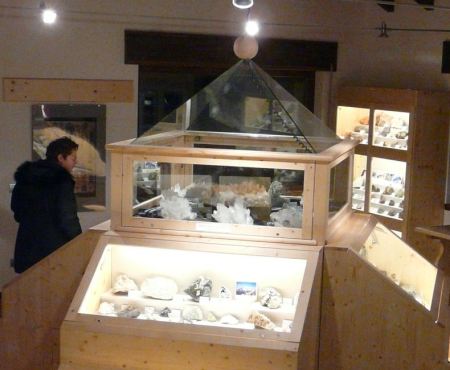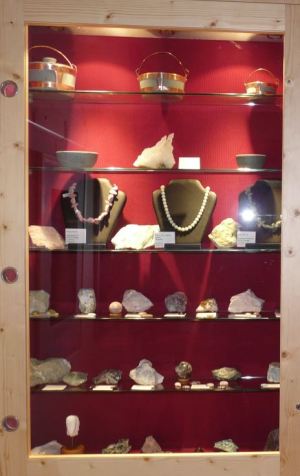by Antonio Costa

The Valmalenco offers scholars and tourists a geological and mineralogical path of particular interest which, for years, has attracted geologists, minerologists and mineral hunters from all over the world to the valley.
The rich mineral content of the Valmalenco, Valtellina and Valchiavenna dates back to ancient events: the impact between the Paleo-African and Paleo-European land masses and the formation of the Alpine range.
The Insubric line, which crosses the Valtellina from the Tonale Pass as far as Colico, roughly divides the two continental land masses.
To the south, the Orobie Alps of Paleo-African rocks with very few minerals, and the mainly Paleo-European Alps to the north.
Before the impact, the two continental landmasses were divided by the Tethys Ocean, the sediments of which were deposited among the rocks of the two supercontinents.
High pressures and temperatures caused by this phenomenon produced metamorphic phenomena and the formation of numerous rare minerals to the north of the Insubric line.
During the late Alpine period, 30-32 million years ago, effusive magma wound its way through (Pluton, Masino Bregaglia Massif), which produced additional minerals.
Overall, a high number of types: over 460 in the province, 270 of which found only in the Valmalenco.
In recent decades, Lanzada has become the centre of Valmalenco minerology.
It all began with the wooden hut, which the seriously ill Rinaldo had built in front of the Hotel-Restaurant Edelweiss in Campo Franscia.
Here he exchanged and sold minerals.
It was a meeting point for miners, prospectors, collectors and minerology enthusiasts.
A network of contacts, which continued over time, even after the death of Rinaldo.
The little hut has disappeared and the tiny square is sadly empty.

The Museum of Minerals of the Valmalenco was established in Lanzada and now houses part of the Fulvio Grazioli Collection.
Grazioli (1913-1991) had taken part in
Pietro Sigismund's
field studies ever since he was a child, and in over 60 years, he established the richest collection of minerals of the Valmalenco (more than 12,000 pieces).
He was the person to discover 12 new sites and 31 new species of minerals in the Valmalenco.
Another major contribution to local minerology was given by Guiscardo Guicciardi, whose collection is preserved in the Municipal Museum of Natural History in Morbegno.
As a result of the work of these three historians and important people, a network of miners, prospectors and collectors was established, who continued to search for and study minerals and who, with the help of the
Istituto Valtellinese di Mineralogia “Fulvio Grazioli” created after Grazioli's death to promote minerology and preserve the Collections, have enriched the Museum of Lanzada with considerable numbers of samples of minerals, donated or lent for display.
Thus, thanks to the contribution and collaboration of the Unione dei Comuni of the Valmalenco, the important mineral heritage of the valley has been internationally showcased for the beauty of the finds (demantoid and various types of granite, berillo, epidote, quartz etc.), and also for its crystals which, although small, are extremely rare (calzirtite, redledgeite, ekanite, tiragalloite, etc.)
One mineral found in the valley is still considered a unique polytype: the Mckelveyite –(Y)-2M.
All in all, this Museum drags the visitor into a fantastic world of multi-coloured crystals of various shapes: a true spectacle of nature.
However, the Museum alone was not enough to recreate the atmosphere of the "little square in Franscia”.
We needed to reconstruct Rinaldo's meeting point between the tourists and mineral collectors, so the Unione dei Comuni of the Valmalenco and the Istituto Valtellinese di Mineralogia organised the "Exhibition and Exchange of Minerals" in Lanzada, which is celebrating its 5th anniversary on 24 and 25 August this year.
Today, minerologists not only from various parts of Italy, Switzerland, but also from some Asian and African countries will be exhibiting in the school gym.
Information.
Museum of Minerals in Lanzada
Via Palù 23020 LANZADA (So)
Tel. 0342.453243